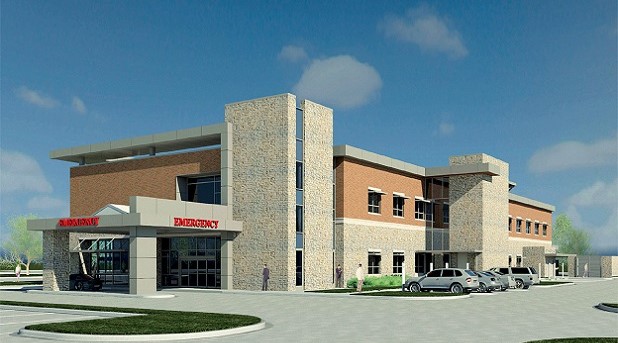 A new SCL-Emerus Health Community Hospital in Littleton, CO, near Denver.
A new SCL-Emerus Health Community Hospital in Littleton, CO, near Denver.
CHICAGO—The US healthcare system has undergone a transformation in the past few years. An aging population, expanded health insurance programs, and new high-tech treatments combined to boost demand and increase the need for efficiency, according to a new report from CBRE. As a result, caregivers need to change the way they operate, and that presents opportunities for commercial real estate providers.
“Reimbursements to medical providers are getting squeezed,” Molly Leach, an associate specializing in healthcare, dental and office properties at CBRE Columbus, tells GlobeSt.com. That’s largely due to new government regulations that base providers’ reimbursements on their patients’ outcomes. “Physicians have to do more with less.”
As a result, “the medical practice that has only one or two providers has gone by the wayside,” she says. Today, doctors prefer to combine at least six or eight practitioners into one office. That way, all can cut down on support staff and real estate costs.
Furthermore, “most providers have switched from paper charts to electronic health records,” curtailing the need for big storage rooms and off-site storage. Ironically, these high-tech tools don’t speed up patient visits. The need to check so many boxes on these detailed records instead means providers “have to spend more time with patients,” another factor behind the push for efficiency.
Therefore, even though physicians and medical technicians want to shrink their individual footprint, they also need buildings and offices more appropriate for this new era, and that will keep the healthcare real estate market quite active for years, Leach adds. “Each practice is getting more efficient in its use of space, but the overall demand for medical space is going up.”
The overall US medical office building vacancy rate was about eight percent in this year’s first quarter, down by nearly 300 bps from seven years ago, and significantly below the 13% vacancy rate for the US office market overall, CBRE finds. And the pace of absorption has accelerated, likely driven by the aging population and increase in the ranks of the insured. The national vacancy rate decreased by 140 bps during the past nine quarters, roughly the same as the prior four years, despite a slight increase in new medical office supply.
And investment in the US medical office sector increased substantially over the past seven years, CBRE finds. Total investment volume in medical office buildings of at least 10,000 square feet rose from just under $4 billion in 2010 to $10.2 billion in 2016. Moreover, total investment in 2016 exceeded the prior annual peak of $7.3 billion in 2006.
But even with all this activity, overall rental rates have remained largely flat for seven years. Leach believes new class A office space, especially if located near major hospitals or close to a provider’s customer base, can command solid rents. But with so many changes hitting the medical office market, a growing percentage of the older space is increasingly obsolete, and that puts downward pressure on the overall rental rate.

















 Copyright © 2024 ALM Global, LLC. All Rights Reserved.
Copyright © 2024 ALM Global, LLC. All Rights Reserved.